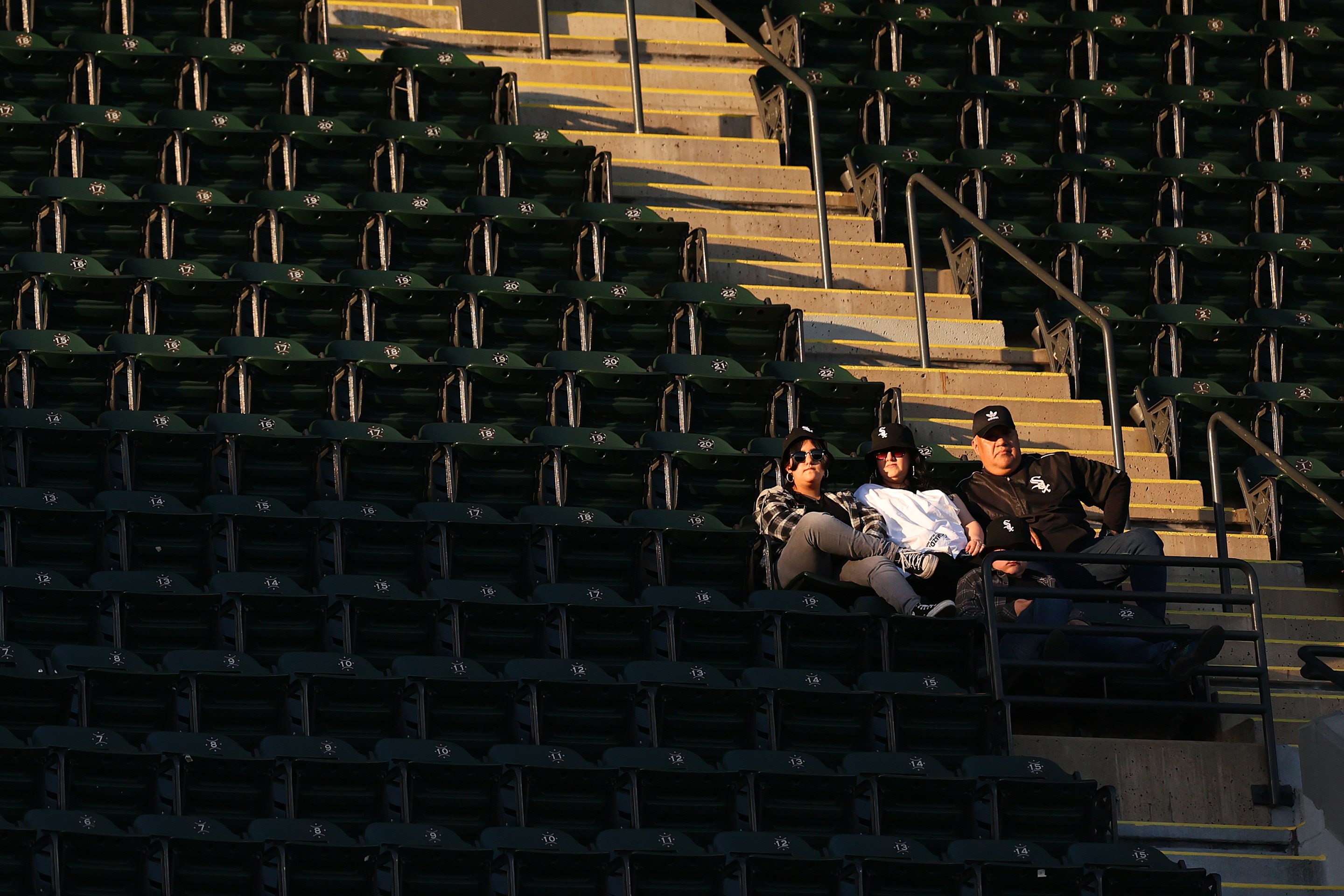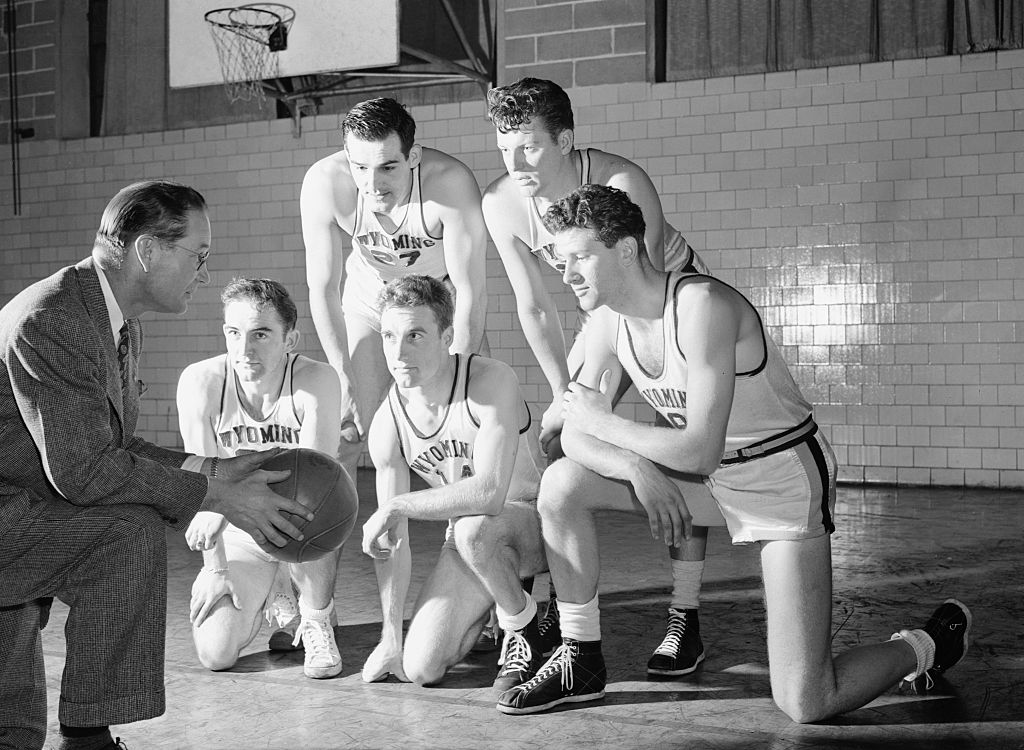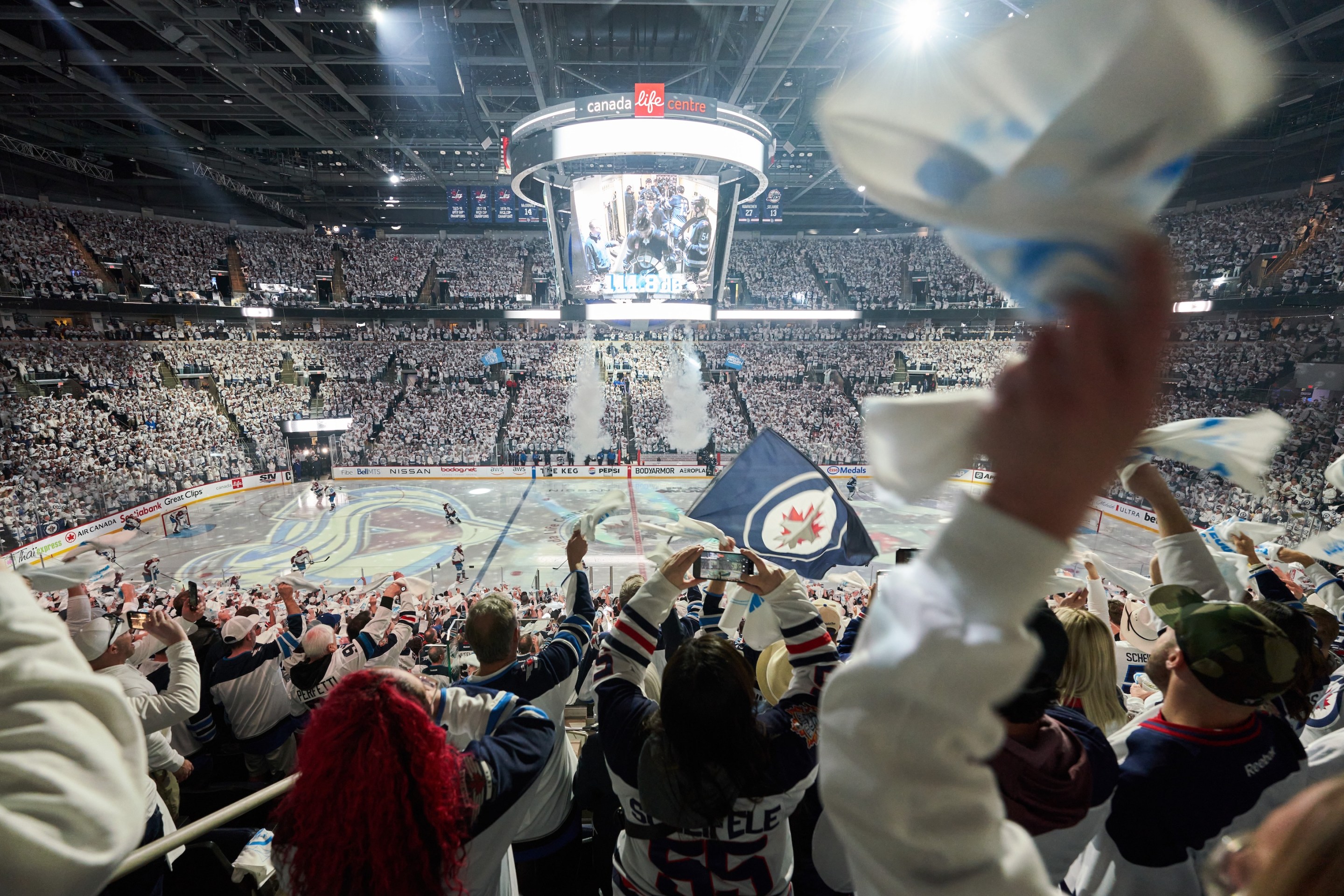Five years ago on the Chicago White Sox subreddit, someone authored an especially cynical post. It was titled "Ricky’s Boys Don’t Quit," a reference to then-manager Rick Renteria’s ability to keep his young and mostly bad players running hard and getting dirty on defense, despite not playing for much of anything. “Whenever I hear this,” the now-deleted user wrote, “I die a little inside due to cringe.” The most upvoted reply: “we are a sad franchise who has little to hope for most times. let us have fun.”
That was right before a rebuild started to bloom; even fans who understood themselves as cheering for A Sad Franchise felt stirrings of optimism. The methodical four-year plan was working—the White Sox were a 93-win division champion, and seemingly on the rise, in 2021—until it didn’t. It would take too long to account for everything that went wrong, because it really was everything that went wrong. The Sox are 29-92, which is by far the worst record in MLB; they have looked every bit like a team that could break some very old league records for single-season futility. Last week, they finished a 21-game losing streak, the second-longest of the modern era and third-longest of all time. That streak, or maybe its end, cost manager Pedro Grifol his job. And man, Pedro’s Boys really did quit; during loss No. 18 of the streak, reliever Steven Wilson blew past Grifol as if he were a stranger standing in his way during an especially angry commute when the manager came to the mound to take him out.
That sort of thing has become normal for the White Sox, at least during the few moments charged enough to actually display any kind of emotion. (When reliever Keynan Middleton said, after being traded away last year, that the team had “rookies sleeping in the bullpen,” it was much more on brand with the Grifol administration.) Mostly, the 2024 White Sox product has been a dead one. When I went to a home game in April—the team’s 14th game of the season and their 12th loss—I was struck by how much it felt like a mid-August game being played after one or both teams had given up on the season and was letting the farm-system kids work stuff out instead. It felt bizarre to have that feeling at a live MLB game while wearing a sweater.
But when the April games already feel like August games, what do the August games feel like? On July 31, I went back for a Wednesday day game, and discovered that what was once a pleasantly under-attended, stakes-free affair had become Baseball Hollow Earth: a place so serenely free of crowds and consequences that it defied the sport’s already quite static social physics. My friends and I paid $9 each for upper-deck tickets, but because so few tickets were sold, the stadium only opened the lower bowl. When we entered, team employees told us to just sit wherever we wanted. We chose to plop down right behind home plate, where nobody had paid the big bucks to take in loss No. 17 of the streak up close. From there, I looked up to the second ring of the stadium, and observed a solitary security guard standing alone amidst thousands of empty seats.
To be clear: I enjoyed this. It’s cool to pay almost nothing to have the run of a 40,000-seat entertainment edifice. I am a lifelong Sox fan, and while much about the team’s epic-dogshit era hurts, there is a lot of joy in attending a game so thoroughly scoured of expectation. With Grifol out, Grady Sizemore has stepped in as interim manager, coaching what is probably an interim roster. The “knowing who’s on the team” rates are at all-time lows. When I ask other fans who they can still name on the team, recently traded players come up: Eloy Jiménez is on the Baltimore Orioles now, and Michael Kopech has joined the Los Angeles Dodgers. Most know that Tim Anderson is gone—out of the league, in fact—but some still get confused. Plenty still wear his and Jiménez’s jerseys.
When I returned on Aug. 12, for a game against the Yankees on what turned out to be Grateful Dead Tribute Night, only five 2021 White Sox were still on the roster; two were out with injuries, but both Gavin Sheets and Andrew Vaughn took the field. (I can definitely recommend watching Aaron Judge swing a bat from several different close-up vantage points, as I did.) It had come to the point, after the deadline, that reading the roster feels like a comic exercise. Multiple starters do not have official photos on ESPN, and so appear as generic silhouettes in their statistical profiles. If you know even half of who’s out there, you are in the 100th percentile of baseball fandom.
This far removed from knowability, a team naturally becomes uncanny; not familiar enough to be hated, but not any purer for their anonymity either. More than any feeling, they evoke that of old sports video games whose budgets were too meager to pay for league licensing. The abstract Sabermetric notion of Replacement Player never felt more concrete. With my eyes, I saw zero Sox players on the field represented on shirts in the seats. There were plenty of throwbacks, though: Dallas Keuchel, Tadahito Iguchi, Jim Thome, Gordon Beckham, Scott Podsednik, Carlos Quentin, sacred troll A.J. Pierzynski. Pierzynski is rumored to be in consideration to take over as manager this winter. Should that happen, it would be a predictably pandering bit of nostalgia from owner Jerry Reinsdorf, who loves to bring back favorite figures from the team’s past to fortify fans’ emotional codex; Ozzie Guillen and Robin Ventura have done that job before, and Tony La Russa was called back from even further out of the past more recently than seems plausible.
About Reinsdorf: Most Sox analysis you’ll find these days spends most of its time criticizing him. He deserves it. The 2021 core fell apart in a way so total that celestial forces well beyond Reinsdorf’s perceptions were likely involved. But their demise was also and importantly a result of the team’s unbelievably bad strength and conditioning infrastructure and their minimal investment in analytics. In an increasingly professionalized sport—mathed-out, optimized, streamlined—the Sox consistently lack even the most basic strategy, capacity, and foresight. Reinsdorf is either too cheap to care, or lost in the sort of befuddling denial that only an 88-year-old billionaire can afford. Either way, he has mostly surrounded himself with old friends and embraced a cozy inertia.
Fan protests over Reinsdorf’s decayed reign, explicit and implied, are surely part of the sagging attendance. His naked manipulations of public-funding structures and the tax code have ensured that he comes out ahead either way. Go ahead and protest, as far as he’s concerned: You’re just helping him dodge the extra expenses incurred if too many people go to the games. If fewer than 2 million people come all summer—which is almost always the case—he gets to skip some real financial headaches.
Fans type their fingers down to bloody nubs about Jerry’s tricks online, but at the stadium you’ll only hear the occasional grousing about it. That’s because, for all the team’s failings, the games still work more or less as they’re supposed to. The Sox are very bad, but they are still a thing you can pay attention to—or just ambiently relax near—for a few hours at a time, instead of thinking about the 2024 presidential election or the state of the housing market or one of the many other things more depressing than this team. The effect is greatly enhanced if you do this in person, and aided by the stadium’s continuing evolutions in “being a nice place to spend time.” There is a bar beneath the right-field bleachers that gives you a view into the opposing team’s bullpen, and one hovering over the left field bleachers where you can get a deservedly viral milkshake—a Yankees fan walked by as I had mine, and muttered, “That’s what the White Sox have going for them.” The outlying concourse provides some of the best views of the city’s downtown skyline, and the stadium is exceedingly easy to get to via public transit.
Despite being the only thing that really works in Sox land, the stadium seems also to be the only thing Reinsdorf is serious about messing with. Earlier this year, the team announced plans to seek funding for a new building site a few miles north, along an undeveloped bank of the Chicago River’s south branch. The blueprint is Reinsdorf’s Ocean’s 13—one last heist of Illinois taxpayer money, schemed up because it’s both more exciting and easier than maintaining a competent baseball organization. But trying in earnest to build the Sox some institutional resilience, and perhaps developing some of the valley of parking lots outside the current building—which, like emptying shopping malls across the country, speak loudly for the dead dreams of the early 1990s—would be just as likely to solve what ails the organization.
All Sox fans wish that the magic of 2021, which peaked when Tim Anderson hit a game-winning homer against the Yankees in the first-ever Field of Dreams Game, could have gone on longer. But that magic stuff has, historically, been for other people. What Sox fans know, and are comfortable with—and, really, what they love—is mediocrity. Deep into the 2024 loser zone, a hard core of fans gesture at approaching a breaking point—one described to me some highly specific mistakes they could’ve made at the trade deadline, but didn’t; that would’ve done it for him—which doesn’t really exist.
If you’re regularly at Sox games now, you’re either the saddest person alive or actively training for whatever competition hands out that title—or you’re just unconcerned with winning or popularity. This season is about finding out what lies beyond the win-loss binary; given that any prospects of victory were ceded before it even began, maybe it always was. Among those left are the type to tailgate wearing “Southside Irish” shirts—many of whom are visibly Not Irish—that are essentially fused with their Notre Dame-themed set of bags. (Cornhole, if you’re nasty.) There is also the guy who wonders in earnest, as the Yankees visit on Grateful Dead Tribute Night, whether the band that keeps playing is “The Ungrateful Dead” or “Insane Clown Posse.” He looks up the logos for each on his phone, and figures it out. I saw this.
There are also a lot of White Sox families with children wearing Aaron Judge jerseys. It’s hard to blame them. When Judge clobbers a double in the first inning, a man wearing many pieces of Sox gear cheers him on. “Somebody’s gotta do something,” he says. There is also a marriage proposal, displayed on the big digital board—which, OK, those people are really deep in the loser zone—which I think only I noticed; there was no applause for the proposal, or any indication of how it went over. There is an old man articulating entertaining conspiracy theories about what happened with the Shohei Ohtani gambling controversy. Ohtani is in the Yakuza, he insists, and his translator was made to be a fall guy—this, it turns out, was an idea peddled by Joe Rogan back in April. There is no effort from ushers to make sure people are sitting in the seats they paid for, because that would be insulting. If you’re here, you’re doing some kind of perverse philanthropy, and so they let you be. One more inspired usher ran up and down the aisle cheering and high-fiving everyone, a true believer. None of the others did this.
Maybe he wouldn’t have, either, a couple weeks ago. The trades of Jiménez and Kopech, plus the absences of Yoán Moncada and Luis Robert Jr. due to injury, really reset the palette. Anderson and Jose Abreu, as well as Dylan Cease, Lance Lynn, Lucas Giolito, Yasmani Grandal, Carlos Rodón, Liam Hendriks and the rest of the 2021 crew have been gone for a while now. But the disappointment has been hard to digest with even that shrinking remnant around. It’s helpful, maybe, to return to the naivete of a more generic, less heartbroken form of baseball. It’s easier to have some vague hope with some fresh nobodies.
Against the Yankees, those nobodies kicked ass. Twenty-four-year-old pitcher Ky Bush, in his second career start, provided 4.2 innings of work with only two earned runs against one of the best offenses in baseball. He got into a lot of jams, then fought his way out of them. Bush was acquired from the Angels last year, for Giolito and Reynaldo Lopez. Maybe he and the opportunistic batters that led the 12-2 trouncing, which was Chicago’s second win of the last month and the first of Sizemore’s tenure, will someday be something. Probably not, though—at least not here. The Sox have already shown that they can gather interesting seeds. It’s the soil cultivation that they refuse to take seriously; fresh talent might grow for a bit, but unless anything about the franchise’s deeper systems changes, it will inevitably wither. Jiménez and Kopech could both tell you about that; they are already thriving on their new teams.
In four trips to the stadium this season, this was the only win I’ve seen. The victory meant postgame fireworks; I had forgotten what those looked like. Neither the win nor the fireworks were necessary for a good time, though. It’s easy to vibe in a stadium that feels like a big, chill bar, one much cheaper and roomier than the one the Cubs play in; it’s possible to head home smiling and unsure of who won the game. Jerry Reinsdorf has built a perfect loser hang, a place where one need not stress about accomplishment or repercussions, where no one knows your name but everyone remembers Jermaine Dye’s. All that competition junk’s been taken care of—first neglected, then destroyed, so you truly wouldn’t have to worry about it.
I’m motivated to get back into this bleak and cozy realm as many times as I can before it’s gone—either Reinsdorf is getting his new stadium or he’s moving the team out of the state, he says. It’s hard to say how genuine his position is. He got his way the last time he did this, threatening to relocate to Tampa and ultimately getting public money to construct the current building, which is now 34 years old. He’s got no political capital left in Illinois, though, especially at a time when even citizens of the much less progressive Missouri are saying no to publicly funded stadiums for perennial Super Bowl winners. Regardless of how his last greasy gambit shakes out, though, the knowledge that this rube’s paradise will one day go away is troubling; it feels right to appreciate it while it’s still around. It’s a great place to quit.
Correction (1:37 p.m. ET): Ky Bush was acquired from the Los Angeles Angels, not the Los Angeles Dodgers.






